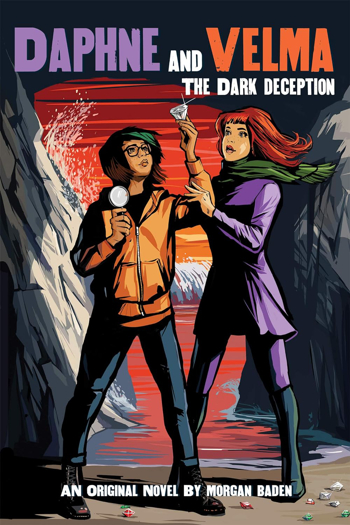While I’ve been recovering from surgery for my prostate cancer, I took time to watch the entirety of the 2010-2013 series, Scooby-Doo! Mystery Incorporated. As the series starts out, it appears to be a fairly straightforward follow-up to the 1969 original series. Fred Jones, Daphne Blake, Velma Dinkley, and Shaggy Rogers are a group of teens who solve mysteries alongside their talking dog, Scooby-Doo. Those mysteries usually take the form of a haunting or a paranormal occurrence, which then turns out to be a cover for a villain in a costume committing crimes. At first glance, the show is mostly marked by slightly updated character designs, plus more backstory. We get to know their hometown of Crystal Cove. We meet their parents and a few of their classmates and teachers. We also open with a hint of a continuous narrative. An anonymous stranger who calls himself “Mister E” sends the gang notes, cluing them in on things to investigate.
The show is clearly set after the classic 1969 series. Velma’s mom runs a museum of Crystal Cove’s haunted attractions and we see many of the classic monsters from the original series on display. What’s more, the city itself has begun to cash in on its reputation as a haunted place. Fred’s dad is the mayor and he doesn’t always appreciate his son unmasking ghosts and monsters, removing a potential source of tourist revenue. The original series routinely showed the gang speaking to a sheriff or a deputy. Now we get to know Crystal Cove’s Sheriff Bronson Stone, voiced by none other than Patrick Warburton, who I met earlier this year at El Paso Comic Con. Mathew Lillard, who played Shaggy in the live action films reprises his part. Velma and Daphne are played by Mindy Cohn and Grey DeLisle respectively. Fred and Scooby-Doo are played by Frank Welker, who was also the original Fred back in 1969.
The ongoing narrative starts out largely by focusing on the interpersonal relationships of the gang. Daphne is clearly smitten by Fred, who is more interested in traps than anything else. Shaggy and Velma are a couple, but Shaggy has a hard time living up to Velma’s expectations and Scooby is extremely jealous. As the series progresses, it becomes clear that Mister E is leading Scooby and the gang on a quest for pieces of a long-lost artifact called the Planispheric Disc. Along the way, they learn they aren’t the first mystery solving group of young people in Crystal Cove. There was a similar group from around their parents’ generation who had a very articulate parrot named Mr. Pericles, voiced brilliantly by German actor Udo Kier. As someone who took lots of German in high school and college, it was great to hear some scenes where the character ad libs some very articulate German dialogue.
While hunting for the pieces of the Planispheric Disc, the gang discovers that a Spanish treasure galleon had run aground off Crystal Cove’s shores back in California’s colonial period. It seems that the Planispheric Disc is connected to that treasure. However, the gang also learns that truly dark and ancient forces might be involved. As this quest unfolds, they meet a character who is an homage to H.P. Lovecraft and they even meet science fiction writer Harlan Ellison, who voiced himself before he passed away in 2018.
Scooby-Doo! Mystery Incorporated presents an extremely satisfying long form story arc that unfolds over 52 episodes. Unfortunately, the writers did have a tendency to latch on to some tropes like a pit bull, such as some of the romance tropes at the beginning of the series. Also, the characters teeter on the edge of being so one-note for the sake of humor at times that they almost lost me. Examples include Sheriff Bronson Stone’s buffoonery and Fred’s single-minded obsession with traps. Still, the humor works more often than it annoys me and as the series reached it’s conclusion, I better understood why they pursued the romance tropes they did. If you’re a Scooby-Doo fan or even if you would like a lighthearted take on the Lovecraftian horror genre, it’s worth checking out Scooby-Doo! Mystery Incorporated.
I explore Lovecratian ideas, including scary creatures from other worlds in my Scarlet Order Vampire series. In fact, Fred Cleaver of The Denver Post compared my vampires favorably with the Scooby Gang. The Scarlet Order Vampire Daniel makes an appearance at Queen Titania’s Court today over at Deby Frederick’s blog, Wymflight: https://wyrmflight.wordpress.com/2024/06/25/ordeal-of-the-scarlet-order-queen-titanias-court/ Drop by, learn more about the series and read a short interview with me and Daniel. What’s more my very first publication was in a magazine that also featured a story by Harlan Ellison. My story from that magazine exists in standalone form. You can learn more here: http://davidleesummers.com/slayers.html









